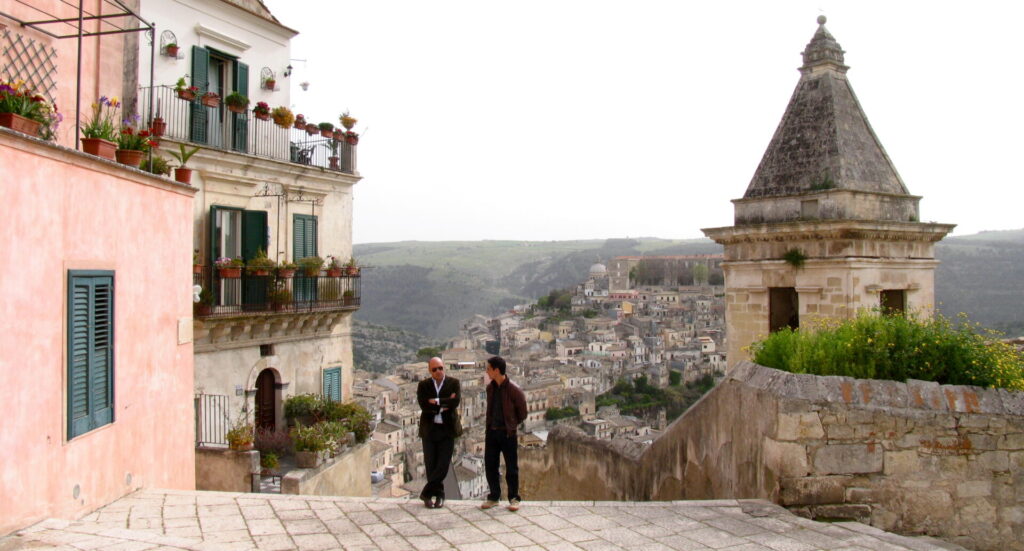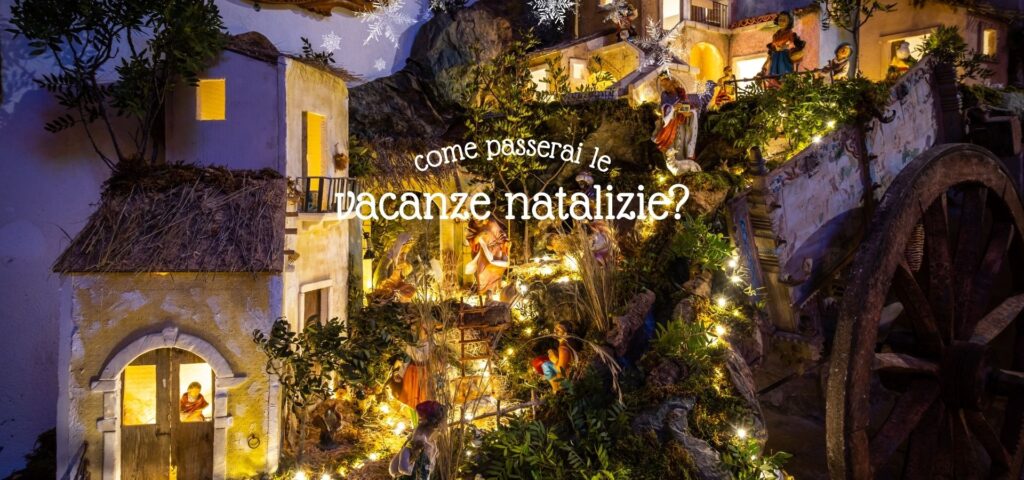Where, if not in Sicily could Andrea Camilleri find inspiration for his famous stories? A series of places clustered around Ragusa in the southeastern part of the island, in Ibla, Scicli, Modica, Ispica, Punta Secca and small seaside villages: the Sicily of the “Inspector Montalbano “. A strip of land stretching toward the sea made up of superb Baroque churches, noble palaces whose balconies are supported by grotesque masks, amazing landscapes and breathtaking views.
Vigata is the fictional name of the town in which Camilleri sets his novels, and Vigata exists. It is all these cities put together, the baroque streets of Ragusa, Modica, Scicli, the natural beauty and sea of Ispica and Santa Croce Camerina.
It is exciting to retrace the same country roads lined with dry stone walls, the sight of the farms, carob trees and pastures, on which Commissioner Montalbano in his gray Fiat would travel between locations of various crimes. And so, in Ragusa, in the historic district of Ibla, which has been declared a UNESCO World Heritage Site, Piazza Duomo, with the majestic and soaring Cathedral of San Giorgio, one of the most beautiful in Sicilian Baroque, becomes the square of the town imagined by Andrea Camilleri, where the commissioner often strolls and has a coffee outside the office. In the same square is the Circolo di Conversazione, a place where the medical examiner, Dr. Pasquano, who is fond of cannoli alla ricotta, likes to play cards, and then Piazza Pola home of the Vigata Police Station for a few series.
A short distance from the city, nestled in the countryside the magnificent Donnafugata Castle becomes the home of boss Balduccio Sinagra. One installment in particular is “The Trip to Tindari” with the Griffo couple’s discovery in the labyrinth found within the castle grounds. The castle is a sumptuous aristocratic mansion from the late 1800s. On three floors, it has more than 120 rooms, about 30 of which can be visited, and an 8-hectare park.
The city of Vigata continues in Scicli, a UNESCO World Heritage Site since 2002.
The town’s Town Hall is the Vigata police station , where the commissioner’s office is based, the mayor’s room becomes the Quaestor’s room in Montelusa, and the beautiful Via Francesco Mormina Penna, the late Baroque heart of Scicli, is the set of many dialogues between the commissioner and his closest collaborators, Mimì Augello and Giuseppe Fazio. In Ispica, the stories “La luna di carta,” in which Piazza di Santa Maria Maggiore with its loggia is glimpsed in the scene in which the Inspector goes to a jewelry store during the investigation of Angelo Pardo, and “La Pista di Sabbia,” where Inspector Montalbano walked with Inspector Fazio in Piazza Santissima Annunziata to discuss illegal racing, were set.
Moving toward the seaside resorts, in Sampieri the ruins of the Fornace Penna, a former brick factory, now a monument of industrial archeology is the mythical Mannara. In the stories described as an infamous location where illegal trafficking is intertwined with prostitution and mysterious disappearances as in the episode “The Shape of Water.”
Marinella and its waterfront are in reality Puntasecca, one of Santa Croce Camerina‘s best-known seaside resorts. Life here is accompanied by the sound of frothy waves in clear sunrises and beautiful sunsets.
A surprisingly intense blue sea and a small harbor dominated by a large snow-white lighthouse built in 1858 at the behest of the Bourbon government. Here Camilleri sets the commissioner’s private life. Opposite Torre Scalambri, an ancient medieval fortress from 1593, on the beach is Montalbano’s famous house, in reality an elegant BB, with a large terrace overlooking the sea and where he often dines with his fiancée Livia.
Here, Montalbano is able to clear his head of all thoughts with a swim; here is Adelina, Montalbano’s “personal” cook, who delights and pampers him with her very Sicilian recipes.
In Puntasecca there is also “Enzo a mare,” the trattoria with a wooden terrace on the beach, frequented by Inspector Montalbano for his meditative and solitary lunches or gallant ones. Nearby are the beautiful beaches of Caucana, Casuzze, Marina di Ragusa and Donnalucata whose streets and harbors have turned into sets for “heinous” crimes.
Finally, in Modica, a Baroque city, UNESCO World Heritage Site since 2002 and capital of the distinctive Igp chocolate, is the bus stop where the Commissioner picks up Livia upon arrival in Vigata .
In the background of many of the shots are the splendid Cathedral of San Giorgio in upper Modica and the church of San Pietro in lower Modica, both Baroque jewels. The Cathedral of San Giorgio overlooks a large roof garden in which, in one part, Dr. Pasquano ‘s house is set and where one of the scenes in the episode “Touch of an Artist” is filmed, in which Inspector Montalbano, as Pasquano himself says, goes to “break his cabbasisi.”
An itinerary through the places of Inspector Montalbano is full of emotions and is an opportunity to immerse oneself in the most authentic Baroque Land, getting to know its places, culture, traditions and sea but also the smells and flavors that characterize it.
Montalbano’s places have been included in the Book of Symbolic Spaces (collective memory). The places have been part of the UNESCO-protected Intangible Heritage of the Region of Sicily since 2014.




